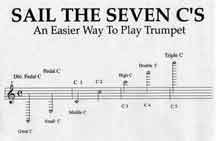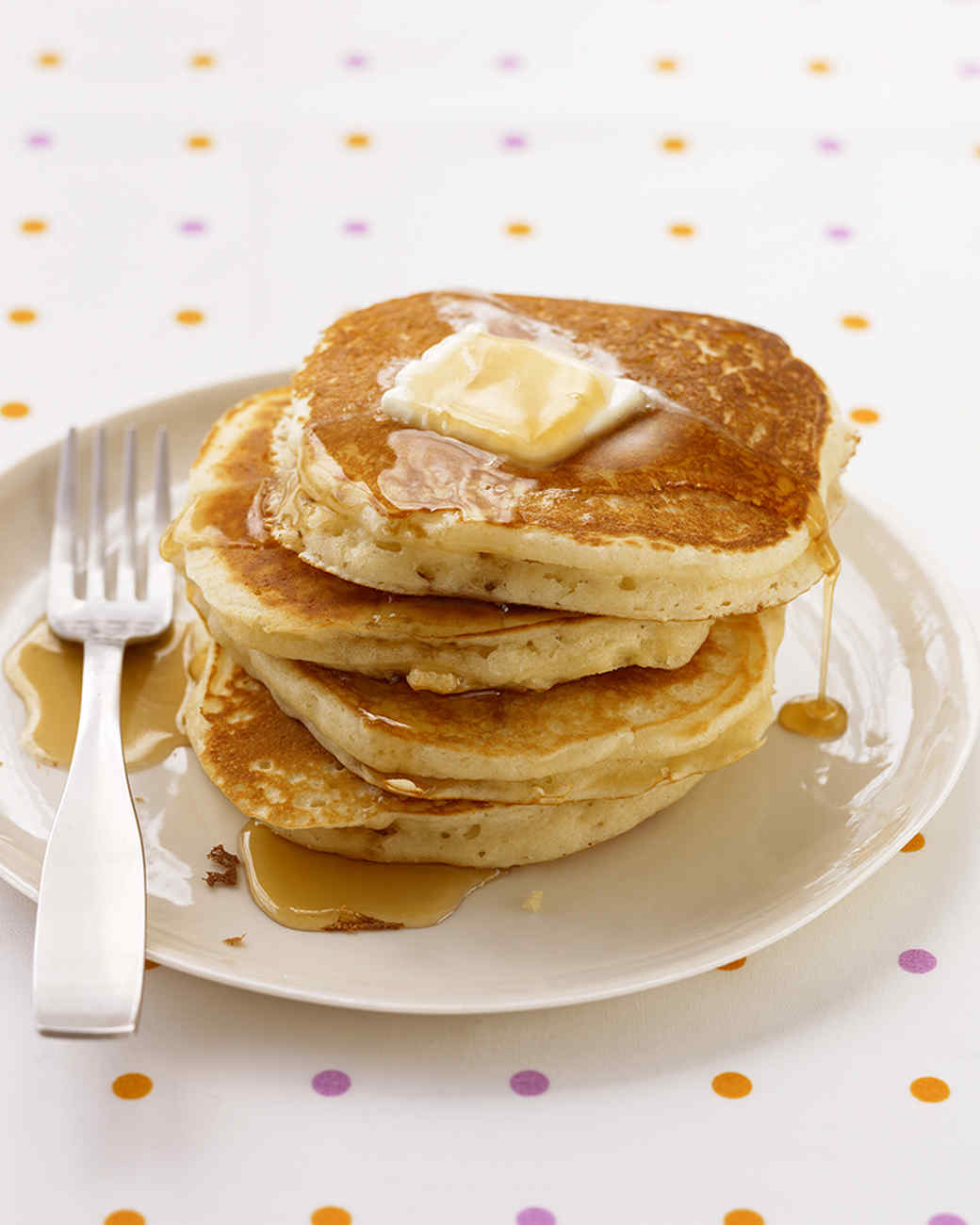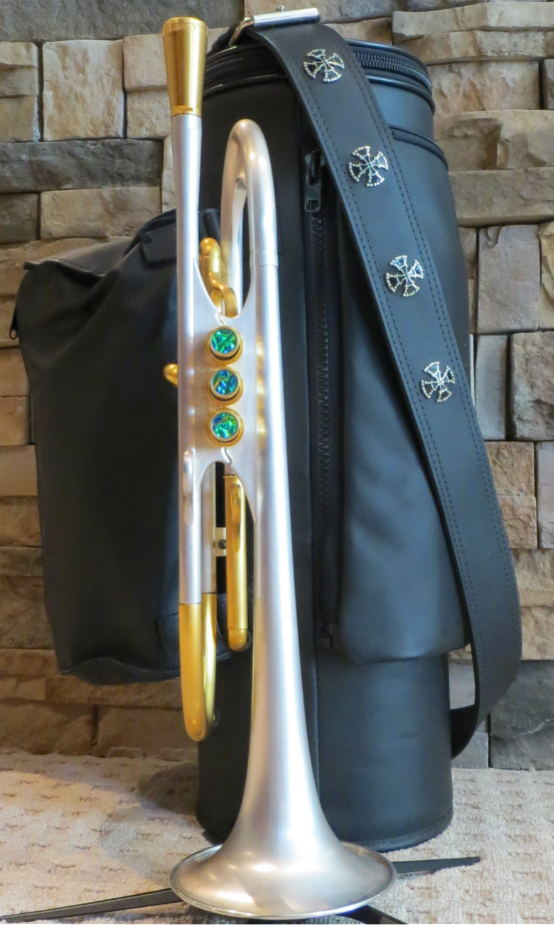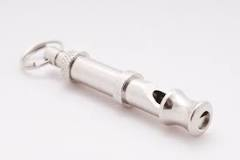The Seven C's
-
A lot of confusion as to what a "Dubba" C is for many. I find this coming mostly from the orchestral side of the aisle. It's what I was taught and seems to be a common thought with some at THe oTHer site. I'll post this picture even though it is small. It's from Clyde Hunt's Sailing the 7 C's. The C's range from C1 to C7 on the trumpet with C1 and C7 being the most difficult, and also the least useful. C2 and C6 (HOLY GRAIL DOUBLE C!!!) are also pretty useless too. I know that's sacrilege in the jazz/DCI/Big band world, but realistically, very few can play those notes musically on a consistent basis. Not that it can't be a goal, but unless you're the top 1% of the 1% of the 1%, you're unlikely to ever use it. I'm still gonna work on C6 though!!!



Anyway, here's the image and if a computer guru can resize it and make it "cleaner", that would be great! Here's what I posted over THere. One guy over there boasted of a "double" G. Maynard could play a double G, but I don't know if he ever did it for a tune!Yeah, I saw that and it dovetailed from another thread on what dubba C was. The OP even suggested his range go to quad C!! I just chuckled. The "C"s range from C1-C7 and that's all for the trumpet. Very few have EVER hit C7 and this guy was suggesting C8!!! If you learned that "high" C is dubba "C", you were taught wrong. It's sounds impressive, until you have to play it. High C is C5, dubba C ic C6. You can call C5 a quint C, but it's still C5.

-
I can do a double C on a good day but its so faint its NA. I can only do it on a couple of my old cornets. Can't do anything above high E (if that) on a trumpet.
-
Playing in the extreme upper register is relatively easy if you use the right equipment:
-
How about sticking to an established standard like....
C4 (middle C)
C5 (treble C)
C6 (high C)
C7 (double C)
C8... that's baloney. No trumpet ever really gets to C8.Yeah, yeah. I know Bb trumpets are transposing instruments one step off concert key. But the forgoing notation is traditional, accepted, and concise.
-
Here we go again.
There are two ways of calling notes. One 1)os related to the Grand Staff when expressing pitches (concert) to a mixed group of instruments, the other 2) when addressing like instruments.For the first, look it up on google and have fun. I usually just say "concert X" and let the various instruments figure out what octave works best. If they are relatively ignorant, I give then their playing pitches.
For 2) relate everything to C in the staff. That is Middle C. The one below it is Low C, the one still further below that is Pedal C. Back to Middle C, the one above that is High C and the one above that is Double High C. For the one above that, well, good luck.
-
Yep, the Grand Staff "messes" up your second point. Here's an interesting read on solutions to the confusion the Grand Staff can cause. The solutions are clever, I think.
http://www.theoreticallycorrect.com/MusicFiction/new-grand-staff/
-
There is now a lively discussion about this over THere! All I did was post the same picture. Apparently it is an issue with many other instruments as well. What I gleaned from the posts was that the ITG designated "C" as the starting point for octaves with trumpets in the 70's. So what I've learned about scales starting at A is now "wrong"? BTW, no one is really saying anyones wrong, it's just pancakes vs. flapjacks.


The top image is flapjacks, the bottom is pancakes.
-
But the bokeh is better on the flapjacks.
-

The real secret to getting a double C on a regular basis... Buy a Harrelson Summit!
So.. not a secret anymore.
-
@Dr-GO said in The Seven C's:

The real secret to getting a double C on a regular basis... Buy a Harrelson Summit!
So.. not a secret anymore.

-
AND worth every penny:

-
-
They both look too thick to be pancakes, but the top pic is closest to pancakes.
-
-
I have a tape of Maynard playing Double G and Triple C in the same measure. (Ole from live Canadian TV in the early sixties)
I am not sharing this recording. Someone asked for it more than 20 years ago. Maybe my great grandchildren will be able to make money off of it? I could share a little of the part that I am talking about but I have to do my taxes first.
-
@Newell-Post said in The Seven C's:
How about sticking to an established standard like....
C4 (middle C)
C5 (treble C)
C6 (high C)
C7 (double C)
C8... that's baloney. No trumpet ever really gets to C8.Play too much so your chops swell up and then tighten as much as possible and blow as hard as you can. You can find it. Good luck doing it on demand in a tune and loud enough to be heard.
-
@Brian-Moon Dude, I'm 64 years old and a recreational player. It ain't going to happen.
-
@Newell-Post
I didn't say that it would be worth learning to do it; just that it can be done. -
@Dr-GO that trumpet looks awesome. I remember following your posts on planning the purchase and the long wait thereafter on TM, but had never seen the delivered model. Would love to know how it turned out for you.
On the other hand, the case looks like a modded torpedo. When I was looking for a new case and was showing my wife the leather torpedo bag, her comment was “ ooh, it looks a bit YMCA bondage...”
I bought the black cordura version....Edit: I have now seen your post in another thread about the Summit, sorry.
-
@Newell-Post there are attachments that can be installed. Like a dog whistle. No one but your dog will hear it, but it will produce some monster high notes.


